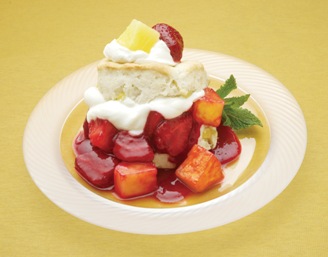Front of House: The Language of the Front of the House
04 May 2010By Wendy Gay, CHE
 Teach students to communicate intent, enhance impact and add value by using business-building phrases and gestures at service.
Teach students to communicate intent, enhance impact and add value by using business-building phrases and gestures at service.
Every profession has a language. We have at least two. In the kitchen, for example, we sometimes “86” an item, saying it is not available. When orders fly in, we can be “in the weeds.” In the front of the house, language is an extremely important part of what we do. The words we speak can create business or take it away.
Three guiding principles in FOH communication are intent, impact and added value. The words we choose should direct the customer to our intent or desired purpose, create an impact and add value to the dining experience.
Intent and impact have to do with imagery. Words create pictures in the mind, and can even direct how a person feels. Choose the images and feelings you want to create. Poorly chosen images can actually talk the person out of what you want to accomplish. Remember that it is the key word that creates the image. Saying “don’t” or “not” in front of the word doesn’t change the picture it creates.
For example, let’s say you want a diner to order dessert. That is your intent. What words would make that most likely to happen? One of my favorites is “We have the perfect little taste to complete your dinner.” It suggests that the dessert is the completion of what they are already doing, rather than an addition. Adding the word “little” implies that it won’t take up much room. “I know you left room for…” is another good start. It encourages the person to find room for more. “To top off your dinner…” or “You’ve got to try…” suggest that the dessert is a necessary part of the dinner or is simply not to be missed. I recently had a server try a different approach. She asked, “You’re not too full for dessert are you?” As soon as the word “full” left her mouth, my belt suddenly felt tighter.
Impact is also about imagery. Use words that create an emotional impact. Much of impact is created by using powerful adjectives. Is the sauce silky, savory, robust, flavorful, amazing, perfectly balanced or even decadent? Are the tomatoes locally grown, heirloom, beefsteak or San Marzano? Watch the effect of including impactful words. Gestures can also impact. Possibly the most commonly used is the Sullivan nod in which you nod your head “yes” while offering something. “Coffee?”
Adding value is doing or saying things that add to the diner’s experience. Greeting and making the person feel welcome is adding value. Providing insight about menu items adds value, as does resolving problems (“I’m sorry that happened. You’re right to expect more.”). The Ritz-Carlton teaches to respond to any request with the words “my pleasure.” I now hear those words being spoken at Chick-Fil-A. Instead of saying “no,” add value by offering other options. “What we could do is….” or “How would you like…?”
I’d love to hear your thoughts on FOH language.
At your service,
Wendy
Wendy Gay is director of catering at The Westin Atlanta Perimeter North Hotel and teaches in the culinary department at The Art Institute of Atlanta.
Photo caption: Selling an add-on dessert like this strawberry shortcake is easier with the proper server language. Photo courtesy of Dole Food Company, Inc.
